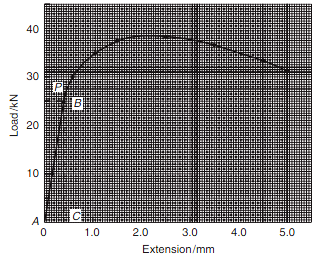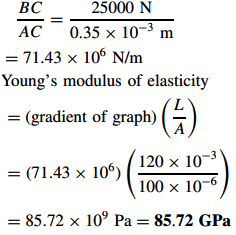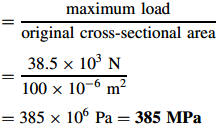A load/extension graph is shown in Figure.
(a) The limit of proportionality occurs at point P on the graph, where the initial gradient of the graph starts to change. This point has a load value of 26.5 kN.
Cross-sectional area of specimen
40 mm × 2.5 mm = 100 mm2
100 × 10−6 m2
Stress at the limit of proportionality is given by:


(b) Gradient of straight line portion of graph is given by:

(c) Ultimate tensile strength

(d) Percentage elongation

From the graph, the load corresponding to an extension of 1.20 mm is 36 kN. Stress at a strain of 0.01 is given by:

(f) When the stress is 200 MPa, then
force = area × stress
= (100 × 10−6 )(200 × 106)
= 20 kN
From the graph, the corresponding extension is 0.30 mm.